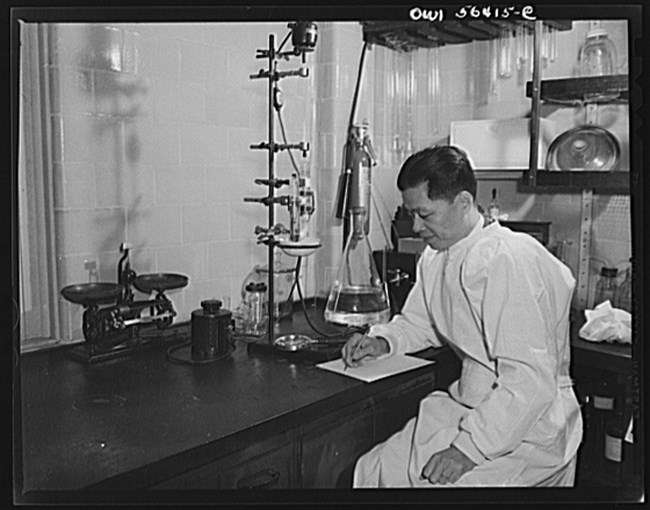Part of a series of articles titled Finding a Path Forward: Asian American Pacific Islander National Historic Landmarks Theme Study.
Article
Asian Americans During The Cold War

Photo by J. Sherrel Lakey, Office of War Information, November 1944. From the collections of the Library of Congress (http://hdl.loc.gov/loc.pnp/fsa.8d43387).
The allied victory in World War II set into motion a series of political and cultural realignments that produced new challenges and opportunities for Asian Americans. The wartime service of both Asian Americans and Asian nationals who were part of the allied military coalition impelled US policymakers to modify some of the more notorious exclusionary laws that targeted Asians. Government policies that discriminated against population groups based on race came under new scrutiny during the war, insofar as America's enemies (e.g. Germany, Japan) so explicitly embraced insidious race doctrines to justify their belligerent actions. Importantly, the long-standing policy of barring Asians from naturalized citizenship on racial grounds was dismantled in a piecemeal fashion in response to international criticism of the chauvinistic treatment of Asian immigrants in the United States. Public narratives extolling the patriotic contributions of Asian Americans during the war provided an opening to challenge many of the entrenched stereotypes (e.g. disloyal, unassimilable, clannish) that relegated them to the margins of US society. Asian American community leaders touted their wartime service as evidence of their "Americanness" and demanded, with some success, greater civil rights and recognition as a reward for their sacrifices. This outpouring of goodwill, however, proved tenuous and quickly gave way to a new set of racial tropes that shaped the experience of Asian Americans during the early Cold War era.
Shifting geopolitical configurations that took hold after the war led the United States to focus much of its foreign policy attention on developments in Asia. A high-stakes rivalry between the US and the Soviet Union to shape the character of the postwar international order was a defining feature... Read more >> (.pdf 2.7MB)
The views and conclusions contained in the essays are those of the authors and should not be interpreted as representing the opinions or policies of the U.S. Government. Mention of trade names or commercial products does not constitute their endorsement by the U.S. Government.
Last updated: July 23, 2024
